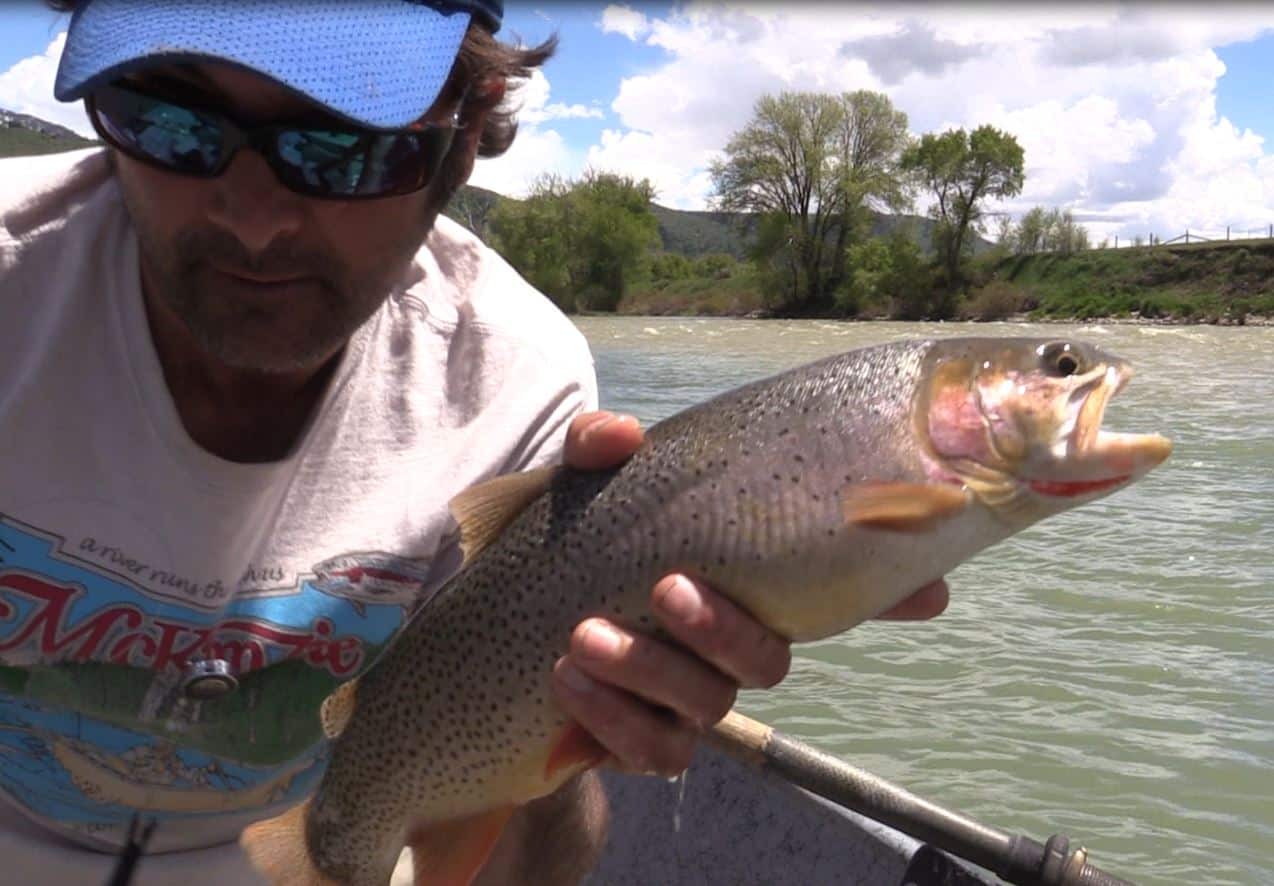This post was last updated on July 16th, 2021 at 11:37 am

This summer I was fishing for ultra picky trout in Yellowstone park and I realized I had never written an article about how to catch picky cutthroat trout specifically. We have all seen pods of big picky trout that seem impossible to catch, but they are there feeding like crazy during some sort of unknown hatch. Often times these fish are eating emergers or very small midges that we can barely see. Cutthroat trout in particular have a weakness that is easy to exploit if you have a flybox that contains them. On Western rivers during all parts of the spring and summer there are almost always some golden stoneflies present, at least to some extent.
Presenting the Western Trouts Largest Weakness – The Stonefly/Rubberlegs
The golden stone is just a bit smaller than the famous salmonfly. The beauty of this hatch is that it takes place almost all spring and summer. Whether the fish are feeding on small emerging mayflies or midges that are too small to see, they will usually take advantage of a big stonefly pattern. As I mentioned in the beginning, the other day I was watching dozens of picky trout feed on small flies. I had with me only one small flybox about 2″x 4″ with probably 20 flies in it. I put on one red chernobyl ant and I managed to hook almost every fish I presented it to during a decent mayfly hatch. Honestly I probably would have tried to match the hatch and throw a small mayfly, but I didn’t pack any fly floatant. I left home in a hurry and frankly didn’t care, mostly because I knew I could pull just about any fish I wanted off of a large fly that didn’t need any floatant.

The Cutthroat Trout Silver Bullet
Big flashy flies with a lot of legs. That just about sums it up. They almost can’t pass them up in most cases. More-so than brown and rainbow trout, cutties are opportunistic. There are hoppers and a variety of other large terrestrials that pop into the water all the time. Cutthroat are more likely to deviate from the standard hatch to take something that catches their eye. If you have a fly that looks literally stupid and can’t imagine anything trying to eat it, a cutthroat might…
I know I’ve talked about this somewhere before, whether it was here or on the Troutster youtube I’m not sure, but I recall a time a few years ago when fishing was tough. I took the dumbest foam ant I could find and colored it with pink and purple markers all over the body. After putting a few lines on the white legs it turned into a killer. It was my top fly for guiding the South Fork of the Snake for weeks. It looked idiotic, but the big cutthroat trout could not resist.
Overfished Trout Mode
Do you have a pod of fish feeding out there in front of you and every time you try to approach or make a cast they stop feeding? That’s because they know you are there. Overfished cutthroat trout are very careful about everything they eat and their surroundings. Here are a few tips for taking care of that problem along with a video I made about hooking picky trout.
The first tip I can suggest is to slow down and make sure you know exactly where the trout is. These fish move around often, and casting like crazy at where it fed 5 minutes ago might be slapping the fly on its head. If the fish sees your fly land you are probably a gonner. If you wait for the fish to feed just prior to making your cast, your odds of hooking it go up significantly. It also is a good idea to ensure you are landing your cast well upstream of the fish.
Cutthroat trout are pretty forgiving in most cases. A bad cast typically won’t put the fish down for as long as it would a big brown trout, but it might…. depending on how much pressure the fish sees. Another very common mistake is creating waves. If you are fishing in faster water this might be irrelevant, but in slow water…the fish are paying attention to the direction of the ripples vs the wind/current. It seems crazy, but watch for it. A ripple in the wrong direction will send trout into lockjaw mode instantly, especially in heavily fished ares. One can combat this easily by moving slowly through the water and paying attention to how much commotion you are making.
That about sums it up I think. If you have any questions feel free to leave a comment here or on Youtube. I hope next time you encounter the opportunity of catching picky cutthroat you can employ some of these tricks.
